Diabetes - Implications within Rehabilitation Programs
Learn something now! - Watch the Online CEU Course Trailer

All Access Online CEU for PT, PTA and OT for $189
BEST VALUE - Includes this course and all our online courses
Subscribe Todaytheaters Purchase Now, Instant Online Course Access
Diabetes - Implications within Rehabilitation Programs
$175.00
- CE Hours: 9.0 hrs .9 CEU
- Delivered: Online
- Instant Online Access, PDF Manual for Download, 365 days of access, Mobile Ready
- No auto-renewal for this option
All Access Online CEU for PT, PTA and OT
$189
All Access Online CEU for PT, PTA and OT Subscription
1 Year Access with Annual Renewal
State specific course completion certificates.
Chat support
Prices are in US dollars- 12 months of access to all online ceu courses, course tests and state approval certificates.
- Meet all your CE requirements. Pre-approved for PT, PTAs in AK, AL, AZ, CA, CO, CT, DC, DE, GA, HI, IA, ID, IL, IN, KS, MA, ME, MI, MO, MS, MT, NC, ND, NE, NH, NM, NV, NY, OR, PA, RI, SC, SD, TN, TX, UT, VA, VT, WA, WI, and WY.
- AOTA approved.
- Designed for Physical Therapists, Occupational Therapists, Athletic Trainers and Assistants.
- Access to future courses and content.
- Start, stop and resume, right where you left off in a course.
- Real patient interviews.
- Medical expert contributors.
- 3D anatomy and medical illustrations.
- Easy to use learning system for fast access to your courses.
- Award winning content.
- Top instructors teaching evidence based skills and techniques.
Why should a physical therapist, occupational therapist or athletic trainer take this Diabetes continuing education course?
Diabetes affects every aspect of the body and can be the underlying cause of limited functional status and rehab progression. Diabetes is a major underlying factor in increasing the risk of COVID-19; without a comprehensive approach to managing this disease, the USA's life expectancy will continue to decline, and many will suffer throughout their lifetimes. Medical professionals must know how to prevent and manage this disease, as 10 percent of the US is known to have diabetes.
Rehab clinical tools instructed in this diabetes CE course to enhance your functional outcomes.
- Descriptions of the physiological effects that diabetes has on multiple bodily systems
- Signs and symptoms and risk factors associated with diabetes and common management strategies
- Diagnostic criteria established by the American Diabetes Association, American Association of Clinical Endocrinologists, and the American College of Endocrinology is presented to provide the foundation for understanding the characteristics of diabetes as well as lab values when progressing patients through a rehab program.
Specific instruction that will enhance your understanding and ability to deliver better patient care.
- Research trials presented to address the relation of diabetes to; exercise, neuropathy, education and outcomes, drug therapy, ulcers, amputations, visual disturbances, and gait.
- Proper utilization of manual skills and testing tools.
- Epidemiology, pathology and evaluation of the diabetic foot.
- Developing patient education programs for prevention and management of diabetes and the diabetic foot.
- Proper exercise and activity progression.
- Footwear to protect the diabteic foot.
Features unique to this diabetes continuing education course
- Demonstrations of foot evaluations to include testing for: range of motion, strength, skin integrity, foot deformities, gait dysfunction, temperature variances, protective sensation, proprioception, capillary filling time, and ABI.
Professional Accreditation
This is an intermediate level course applicable for PT, PTA, OT, AT.Physical Therapy Accreditation: For specific state information use the accreditation verification menu and select your state of license. AOTA: provider #4487, Occupational therapy professional development activity: Occupational therapy foundation knowledge: human body, development, and behavior. Athletic Trainers: BOC provider #P2047, category A. This course has not been submitted for Evidence-Based BOC approval.
fact_check Accreditation Verification
Online CEU Course for PT, PTA, OT State Accreditation
Course Objectives

- Discuss the etiology and epidemiology of diabetes and foot disease related to diabetes.
- List the chronic complications of diabetes.
- Discuss the classification of diabetes.
- Discuss current evidence-based research trials in relation to diabetes and exercise, neuropathy, education and outcomes, drug therapy, ulcers, amputations, visual disturbances, and gait.
- Discuss the epidermal barrier and the importance of skin integrity and proper healing environment for patients with diabetes.
- Identify the function of insulin in epidermal barrier homeostasis.
- Identify specific diabetic medications and their effect on the musculoskeletal system.
- Describe AGE’s and the implication on collagen and bone.
- Identify lab values and the impact of specific values on treatment and goals.
- Describe the impact of high insulin levels on the nervous system.
- Identify peripheral and autonomic neuropathy and plan appropriate treatment programs.
- Identify visual dysfunction due to prediabetes and diabetes.
- Discuss insulin resistance and the impact on the cardiovascular and musculoskeletal system.
- Identify normal A1C and the impact of higher levels on healing.
- Perform a comprehensive foot examination and risk assessment.
- Perform a foot evaluation testing for range of motion, strength, skin integrity, foot deformities, gait dysfunction, temperature variances, protective sensation, proprioception, capillary filling time, and ABI.
- Identify sensation loss and LOPS with proper monofilament testing.
- Discuss the role of appropriate skin and foot care, education, and footwear selection in the prevention of ulceration and lower extremity amputation.
- Discuss the implications of longstanding neuropathy nerve function and recovery.
- Describe the factors that can increase the risk for diabetic ulcers and amputations.
- Educate and guide a patient through appropriate foot care and footwear selection.
- Identify objective range of motion deficits in the foot that can lead to injury and potential skin breakdown.
- Implement appropriate targeted Physical Therapy intervention for individuals with diabetic neuropathy.
- Educate patients on the tools needed to prevent the chronic complications of diabetes?ABCs of Diabetes.
- Discuss the impact of exercise on neuropathies
- Identify the stages of Charcot’s and develop a comprehensive program to address the musculoskeletal and neurological deficits for better function.
- Develop a patient education program for patients with diabetes.
- Evaluate for peripheral vascular disease.
- Identify structural foot deformities such as Charcot’s, bunions, rigid deformities, calluses
- Identify the specific range of motion needed in the lower extremity during the gait cycle to minimize events that can cause injury.
- Educate the diabetic patient on proper foot and toenail care, and the prevention of amputations.
- Educate patients on the ABC’s of diabetes management and prevention.
- Discuss studies on TaiChi, vibration therapy and specific therapeutic exercises and the impact on neuropathies, glucose levels cardiovascular health and musculoskeletal balance and strength.
Learn from the Expert Mitzi Hazard, PT, CDE, C.Ped.

Mitzi Hazard, PT, CDE, C.Ped. graduated cum laude from California State University at Long Beach with a BS in Physical Therapy in 1992. She received her national board certifications as a diabetes educator from NCBDE in May of 2003 and as a pedorthist from BCP in June 2005. Her professional passion is the achievement of techniques and programs that maximize the healing of wounds. Ms. Hazard has dedicated a major portion of her career to studying effective treatments for wound care and to the prevention and treatment of diabetic neuropathic wounds. She worked for Olympic Medical Center (OMC) in Sequim, Washington from May of 1999 until 2004. She was the manager of rehabilitation services and a diabetes educator in the OMC ADA-accredited diabetes self-management education program. She served as a wound care resource for both rehabilitation and nursing staff consulting on difficult wound cases of arterial, venous and neuropathic origin. She has developed staff education programs related to diabetes, wound care, custom foot orthotics and the diabetic foot in the geriatric population. In November 2004, she opened her own private practice, Feet First Custom Orthotics, specializing in custom foot orthotics and diabetic neuropathic ulcer management. Mitzi Hazard joined Jefferson Healthcare’s team of medical professionals in 2009 as a Physical Therapist. She is also the Clinical Supervisor and part of an expanding staff of highly skilled physical therapists in demand in eastern Jefferson County.
Understanding CDC statistics
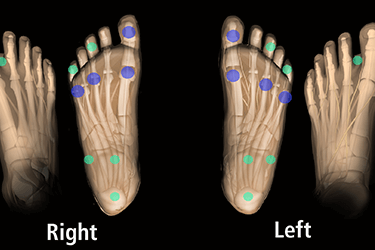
- A1C
- Global facts
- Death rates in people with diabetes
- Exercise and diabetes
- Understanding Prediabetes
- CDC maps of population throughout US with prevalent diabetes
- Chronic complications of diabetes
- Coexisting conditions
- Cardiovascular disease
- Microvascular risk
- Blood pressure
Risk factors for Diabetes
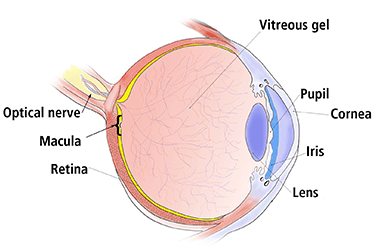
- Insulin levels
- Metabolic syndrome
- CVD
- Autonomic neuropathy
- Heart disease
- Polyneuropathy
- Urogenital autonomic neuropathy
- Distal symmetric polyneuropathy
- AGE
- LOPS
- Ocular manifestations
- Retinopathy
- Nephropathy
- Markers- higher rates of mortality
Diabetic retinopathy
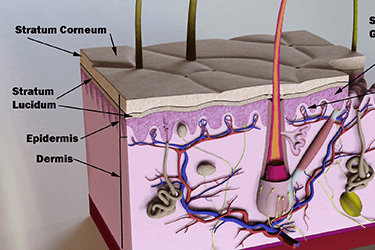
- Risk factors of retinopathy outlined-factors that affect treatment
- Diabetic proliferative retinopathy
- Small vessel disease
- UK PDS Trial
- Disordered bone metabolism
Diabetes - The Clinical Details
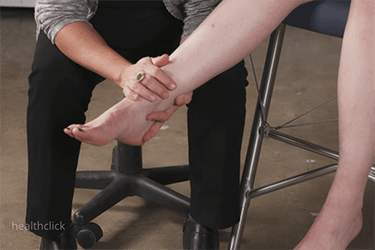
- What is diabetes?
- Questions/answers about glucose testing
- Discussion about testing A1C
- Lab tests to determine diagnosis of diabetes and extent
- Carbohydrates and glucose testing
Understanding A1C, Insulin and Amputation Risk
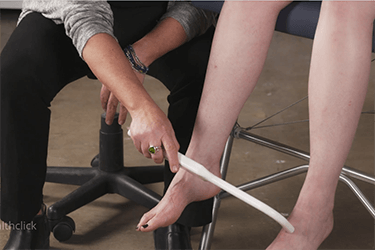
- A1C for diagnosis?
- Prediabetes
- Diabetes screening
- Food choices
- Neuropathy education
- Diabetes prevention
- Epidermal barrier
- Collagen
- Glycation
- xerosis
- Insulin and the epidermal barrier
- Diabetic foot epidemiology
- Morbidity and mortality
- Ulcer prevention
- Prevention of amputation
- Cost of diabetes
Objectives for foot assessment
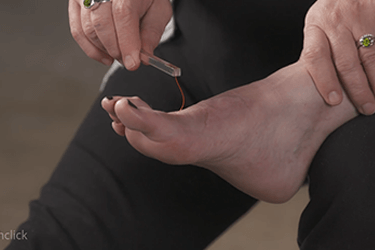
- Functional status
- Preventing ulcerations
- Ulcerations
- Amputations
- Diabetic foot epidemiology
- Pathophysiology of the diabetic foot
- Risk factors
- Peripheral neuropathy
- Peripheral vascular disease
- Trauma
Limited joint mobility increase risk of ulcerations and amputation
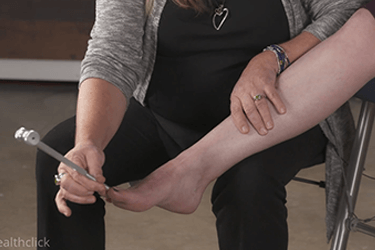
- Limited physical activity
- Peripheral neuropathy
- Sarcopenia
- Musculoskeletal impairments
- Hyperglycemia
- Gait dysfunction
Study review on weight bearing exercise and peripheral neuropathy

- Peripheral neuropathy outcomes
- cartilage regeneration
- Ulcer recurrence
- Risk factors
- Infections
- Diabetic neuropathic osteorpathy
- Etiology of Charcot
- Charcot-etilogy
- Diagnosis
- Ohases of Charcot
Study review-aerobic exercise and peripheral nerve function in patients with diabetic peripheral neuropathy
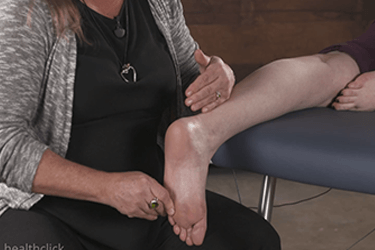
- Second study on Tai CHI
- Benefits on neurpahy scores
- Glucose control and quality of life
- Vibration therapy
- Study review exercise and diabetes
- Benefits of exercise
- Pre-exercise assessment
- Fall risk assessment
- Medical safety training
- Gait-key mobility needed
- correcting muscle imbalances
Assessment of the Diabetic Patient

- Risk categories
- Prevention of high-risk conditions
- Education sock recommendations
- Toe nail care
- Foot inspection
- Diabetic foot assessment
- Skin assessment
- Monofilament testing
- Sensation
- Vibration
- Ankle Barachoial Index
- Capillary refill
- Range of motion
- Patient education on foot care
Course Test - Evaluate your knowledge

- Use the Healthclick proprietary online education system which provides the online student with:
- Worldwide access to high definition video, anatomical animations and images, and written information
- The highest quality film in the industry, you can see the difference!
- Stop and resume within a course, the Healthclick system will optimize your course based on your device, connection and remembers where you left off.
- Real-time course updates. We are always adding to each courses, updating content, adding animations, these are not static courses!
- Evaluate your knowledge with the course test on any device.
- Print your state course certificate for CE credit.
- Take the online test as many times as need in order to achieve a 70 % or greater score.
Responsible CME® - Online CEU Course Testimonials
67.225.255.111Great course! -- Brandon, PT
I cannot sing the praises of this course enough! Not only was it a very needed course in PT to aid us in additional focuses we need to take with these specific patients, but it gave us education from start to finish in all aspects of our care with these pts (evaluation and assessment to d/c even with EBM for tx focus)! There are so many interesting facts and tidbits I learned that I did not know about our diabetic pts and the lecturer kept me engaged throughout the 5.5 hour course with great real life stories mixed in and good visual aids especially during the EBM portions. Plus I love the lecturer's organization of the PDF in the key information sections to ensure I was taking away the information most relevant. I would recommend 100%! -- Alexandra, Physical Therapist
Instructor was very knowledgeable about diabetes and offered evidence- based rehabilitation approach. -- Cherie, OT